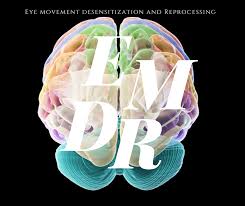Article
Get Rid of Entrenched Negativity!

Long-standing emotional baggage from the past can easily affect us today. Negative or anxiety-producing patterns can easily keep replaying; they form a deeper rut and stronger network connections each time they play in a self-perpetuating cycle.
Pulling out the weeds first can make rewiring and planting new networks easier.
One of the best ways to accomplish this is EMDR, or eye movement desensitization and reprocessing. EMDR initially had its fair share of skeptics, but today, this therapy, which has been the subject of many research studies, has become more widely accepted for use in the treatment of mental health, especially trauma diagnoses.
In EMDR, you essentially rewrite memories of damaging life experiences and take your power back. The old wounds just don’t have the same emotional hold over you. It’s as though you remember things now more in black and white than vivid color— with all its accompanying, unsettling details. It won’t be as upsetting or scary the next time you remember or visualize that picture.
The eye movement part of this practice is now downplayed. “It’s really about bilateral stimulation of both hemispheres of the brain, and there are several other effective ways to do this, such as tapping, sound, or vibration,” says Sharon Schwartz, a prominent practitioner and speaker on EMDR. It’s recommended you do this with a trained therapist to facilitate the process. It involves recalling the painful experiences while simultaneously doing bilateral stimulation. I’ve seen people simply passing a ball back and forth between their hands and watching the movement closely while recalling a memory.
The brain is extremely complicated, and it’s hard to definitively say how EMDR works. Most researchers and psychologists’ surmise that performing two tasks simultaneously, e.g., recalling a memory and doing bilateral stimulation at the same time, requires working memory capacity and interferes with working memory processes. This leaves less room for the unwanted memory, thus making it less vivid and less emotional.
This is reasonable since it’s virtually impossible to pay attention to two things at the same time. By switching gears quickly, you shift the arousal state. People with trauma can be stuck and have trouble switching gears. The memories will always be there, but with EMDR you have practice with accessing, being exposed to those moments, and making them less powerful. This helps to train the amygdala since it only learns from experience; you can’t use reasoning or logic to tackle anxiety that arises from reactions in the amygdala itself, as opposed from thoughts in the cortex.
This type of exposure therapy is a form of rewiring, as it helps the amygdala “unlearn” associations between danger and particular experiences, like authority figures, loud voices or driving a car, etc. Gradual, repeated exposure to whatever’s causing anxiety is a way to help the amygdala learn a more neutral association between the experience and our reaction to it. EMDR also gets beneath our inherent resistance to being exposed to the memory or things that run counter to our pre-held beliefs.
Another theory is that EMDR facilitates access to adaptive memory, similar to the REM phase of sleep, when the brain processes the day’s residue and files it away. Disturbing life events or memories seem to be stored in a fragmented form. Most of our memories and negative material is not reopened and activated in the same way you would reopen a document on a computer. It’s not retrieved as a whole, but rather reconstructed very quickly by the brain in an active process in which vast numbers of synapses take fractions of a second to sync up together into a kind of confederation that represents the experience of the materials.
EMDR appears to facilitate the reconnections of these fragments. The brain knows where it needs to go to make the neural connections for healing to occur and it does this work. This is how EMDR seems to allow for adaptive resolution of disturbing life events, a shift from negative to positive cognitions about them, and to effectively resolve these adverse life experiences and any hold they have over you.
- May 2024
- March 2024
- December 2023
- October 2023
- August 2023
- June 2023
- April 2023
- March 2023
- January 2023
- October 2022
- September 2022
- July 2022
- May 2022
- March 2022
- January 2022
- November 2021
- October 2021
- August 2021
- May 2021
- April 2021
- February 2021
- January 2021
- November 2020
- October 2020
- August 2020
- June 2020
- May 2020
- April 2020
- April 2018